

Houyi & middot; Low-altitude defense system is a non-pyrotechnic missile weapon system. Its main operational objectives are the unmanned aerial vehicle represented by "low-speed" and the "bee colony" unmanned aerial vehicle which will appear in the future battlefield.
Houyi & middot; Low-altitude defense system consists of missile subsystem, ground TT&T subsystem and target search and tracking subsystem.
1. The missile subsystem is a combat unit, which includes missile structure subsystem, power subsystem, integrated guidance controller subsystem, data link subsystem and warhead subsystem.
2. TT&T subsystem is the carrier of missile storage, transportation, testing and launching. It includes test subsystem and launch control subsystem.
3. Target search and tracking subsystem is the "brain" and "eye" of the system to discover, recognize, track and guide the target. It includes detection subsystem, data processing subsystem, target tracking and strike decision subsystem and data link subsystem.
Houyi & middot: Low-altitude defense system can combine single or multiple components to form different defense depth, different response time and different missile subsystems by selecting different detection subsystems (including radar, photoelectric detection equipment, sonar detection equipment, radio detection equipment, etc.) and different missile subsystems according to customer needs and application scenarios. Modular low-altitude defense integrated solutions with different damage degree and combat cost.
The product aims at introducing a low-cost, reusable non-pyrotechnic anti-UAV missile system. For the vast majority of "low, small and slow" aircraft, accurate non-lethal acquisition is carried out when found. It not only eliminates security threats quickly, minimizes incidental injuries, but also retains evidence to the greatest extent. It is a powerful weapon for future anti-UAVs and even anti-cluster UAVs. It will provide more convenient, low-cost and highly automated security for the defense of key departments such as troops, frontier defense, public security, customs, prisons, oil depots, nuclear power plants and government organs.
The core design of the system is a small anti-UAV missile with electric propulsion and Dual-mode Guidance Mode of radar and visible light. It is characterized by low cost, flexible and convenient use, simple storage, reusable use, extremely low cost and so on. It is also a sharp weapon for future anti-swarm UAV operations.
Houyi & middot developed by the company; the overall technical scheme of low altitude defense system for UAV reconnaissance, positioning, attack and capture system.
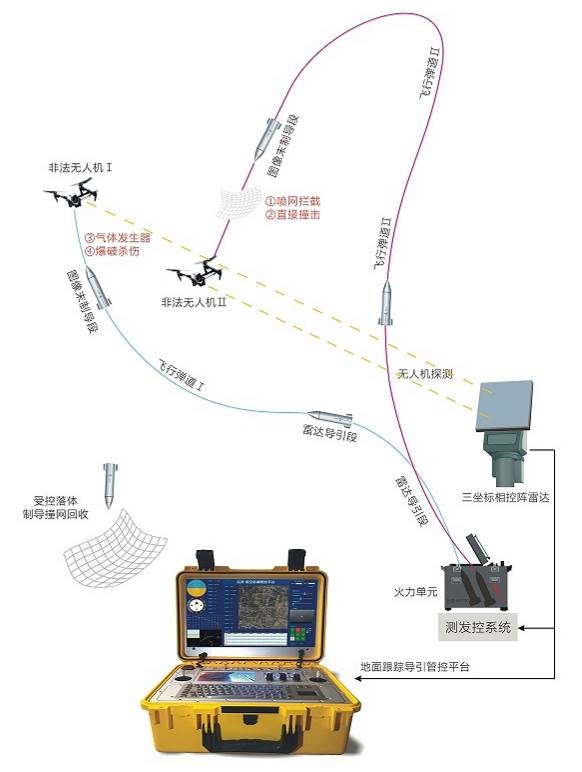
_Houyi & middot; Low-altitude Defense System Composition and Operational Schematics
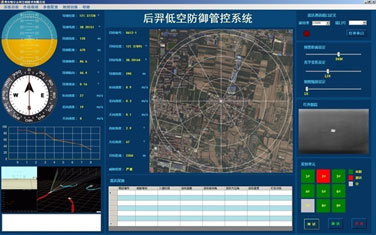
_Houyi & middot; Software interface of low altitude defense control system
1. The key technologies involved in the target search and tracking subsystem include:
& Oslash; Recognition and Tracking of Single Target
& Oslash; Target Location and Motion Trend Estimation
& Oslash; Target Threat Assessment and Strike Decision
& Oslash; Missile and Eye Tracking and Command Control
& Oslash; Multi-target tracking and multi-missile guidance coordination
2. Key Technologies of TT&C Subsystem
& Oslash; Missile Full Storage
& Oslash; Missile Rapid Testing and Rapid Online Calibration
& Oslash; Data Binding and Fast Launch Control
& Oslash; Automatic Feeding and Fast Loading
3. The key technologies involved in the missile subsystem include:
& Oslash; Missile Attitude Stability and Guidance Control
& Oslash; Multimode Compound Guidance
& Oslash; Structural Design of Anti-High Overload Missile
& Oslash; Design of diversion intake structure
& Oslash; High Speed Target Recognition and Tracking
& Oslash; Effective Damage and Secondary Damage Control
& Oslash; Missile Recovery Technology
1. Application mode:
Fixed Network Defense
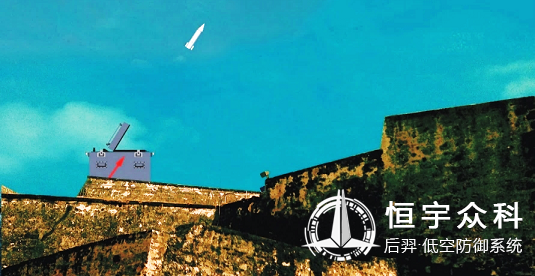
_Fixed Defense Mode
(2) Vehicle-borne Mobile Defense
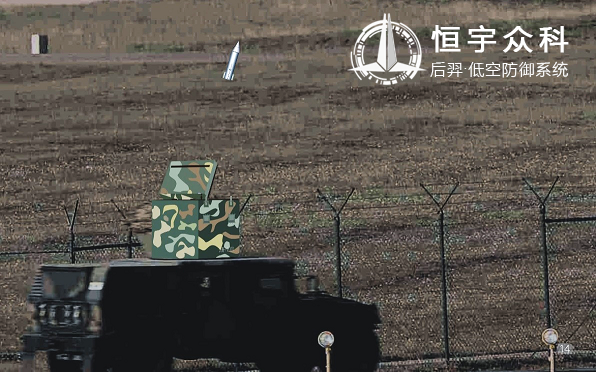
_Vehicle-mounted Mobile Defense Mode
3. Shipborne Mobile Defense

_Patrol Vessel Mobile Defense Mode
(4) Defense mode of net capture
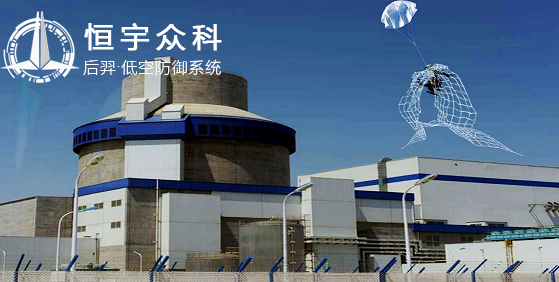
_net catching mode
2. Operational mode:
According to the line-of-sight relationship between the attacked UAV and the missile, it can be divided into two types: in-line-of-sight attack and over-line-of-sight attack.
(1) Intra-Visual Attack
(1) When UAV enters the radar monitoring area and is in the range of sight of missile launching position, the missile launches and approaches the target UAV under the guidance of radar.
(2) When the missile is far from the UAV250At metre time, the optical seeker on the missile automatically starts to look for the target.
(3) When the missile is far from the UAV100to150In the range of meters, the optical seeker on the missile automatically identifies and tracks the target, and the guidance system of the guided missile transmits information from the command guidance mode to the automatic homing guidance mode.
(4) According to the parameters provided by radar, the missile guidance system calculates the absolute position of UAV at one time and the relative position of UAV at the next time.
(5) Missile warheads attack UAVs and release interceptor nets to intercept UAVs.
(2) Over-the-horizon attack
Over-the-horizon attack refers to the limitation of geographical environment. For example, there are tall buildings in the monitoring area. Although the early warning radar placed on the monitoring area highland can detect and track the illegally invaded UAV, the target can not be seen from the missile launching position, which is called over-the-horizon attack.
(2) In the over-the-horizon attack mode, the missile first launches into the air in accordance with the system instructions and carries out the interception task;
(3) In the air, although the missile camera can not capture the UAV. For example, UAVs hide behind buildings, but missiles can bypass obstacles and approach targets according to radar parameters.
(4) When the missile enters the sight range of the UAV, it is within the sight range of the UAV.250At metre time, the optical seeker on the missile begins to detect the target automatically.
When the Missile Distance is Unmanned Aerial Vehicle100to150In the range of meters, the optical seeker on the missile automatically identifies and tracks the target, and the guidance system of the guided missile transmits information from the command guidance mode to the automatic homing guidance mode.
The missile guidance system calculates the absolute position of UAV at one time and the relative position of UAV at the next time according to the parameters provided by radar.
(5) Missile warhead attacked UAV, and jet interceptor intercepted UAV.
3. Application scenarios
& Oslash; Frontier and Coastal Defense Against Unmanned Aerial Vehicle Invasion and Infiltration
& Oslash; Army Accompanying Guarantee Anti-UAV Reconnaissance Attack
& Oslash; Nuclear Power Station Anti-UAV Invasion
& Oslash; Island All-weather Clearance Defense
& Oslash; Military Airport Anti-Cluster UAV